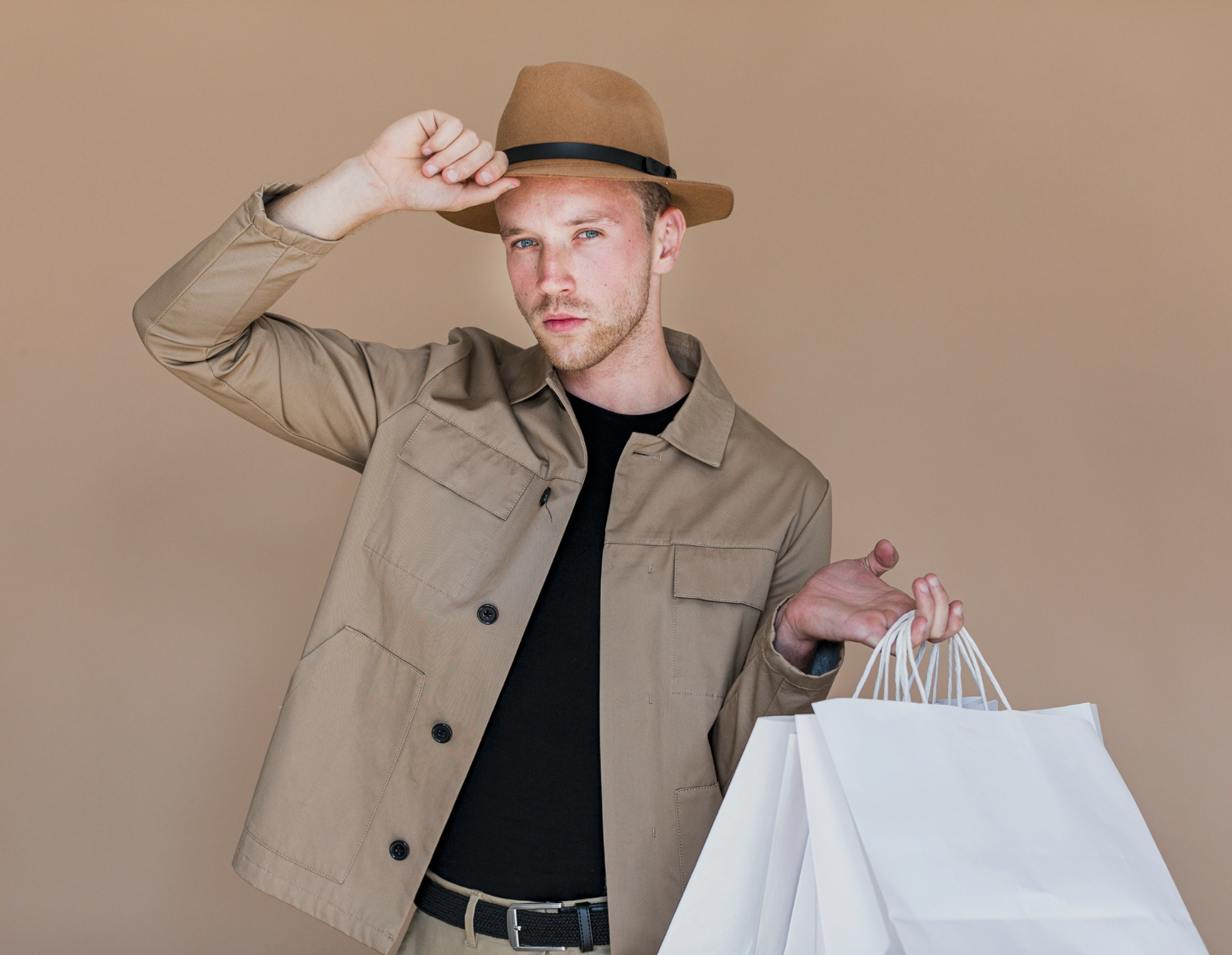Blending my personal flair with a brand’s aesthetic is a skill I’ve come to appreciate deeply in my modeling career. It’s not just about being stylish, it’s about becoming a living, breathing extension of the brand’s identity. When a brand looks at a model, they’re not just considering physical features; they’re envisioning how well you align with the story they’re trying to tell. That’s where mastering how to match your style to a brand’s look becomes essential.
Whether I’m walking into a casting, prepping for a shoot, or updating my portfolio, I’ve learned that studying a brand and tailoring my presentation accordingly can often make the difference between getting the job and getting overlooked.
Studying the Brand’s Identity
Before I even consider what to wear or how to pose, I take the time to study the brand. I browse their website, scroll through their social media, and look at past campaigns. I want to know their color schemes, their vibe, and what kind of message they send. Are they edgy and youthful like Urban Outfitters, or classic and refined like Ralph Lauren? Is their photography moody and shadowed or bright and fresh?
It’s not just about visuals either. I listen to the tone of their captions, watch their behind-the-scenes content, and absorb how they communicate. If a brand uses words like “raw,” “authentic,” or “rebellious,” I know I can lean into more unconventional expressions and styling. On the other hand, if their language is “refined,” “timeless,” or “graceful,” I go for polish and elegance.
Dressing the Part with Intention
Once I’ve immersed myself in the brand’s world, I select my outfit accordingly. That doesn’t mean copying what I see on their models, it means channeling the energy of their brand through pieces I already own. If I’m aiming to align with a minimalist brand, I’ll reach for neutral tones, clean lines, and classic cuts. For a bold streetwear brand, I might go with statement sneakers, oversized jackets, or layered textures.
Knowing how to match your style to a brand’s look is about intention. Every piece I wear sends a signal, and I want those signals to sync with what the brand is already communicating. If they focus on ethical or sustainable fashion, I might even wear or mention brands that reflect that ethos. It’s about presenting myself as someone who already fits within their ecosystem.
Hair, Makeup, and Overall Aesthetic
Style goes beyond clothes. The way I wear my hair or do my makeup also plays a crucial role in the overall presentation. A bohemian brand might suit loose, tousled waves and natural makeup, while a luxury brand may lean toward sleek hair and more refined beauty choices. I don’t always go full glam or bare-faced based on assumption, instead, I balance what suits me with what aligns with their campaigns.
If I’m unsure, I often revert to simplicity. Clean skin, groomed brows, and neutral tones offer versatility. That way, I’m a blank canvas ready to be styled to their liking, but I still show that I’ve done my homework.
Adapting Without Losing Yourself
One of the biggest challenges I faced was how to match your style to a brand’s look without losing what makes me unique. I’ve found that the trick lies in flexibility, not conformity. I don’t suppress my personality, I filter it through the lens of the brand. If I’m known for a sporty vibe and I’m auditioning for a luxury label, I don’t pretend to be something I’m not. Instead, I find the crossover. Maybe that means emphasizing clean tailoring or choosing a monochromatic outfit that still carries a relaxed silhouette.
Brands don’t want clones, they want authenticity that resonates with their identity. By staying grounded in who I am, I’m able to bring something special to the table while still showing that I get them.
Posing and Energy to Reflect the Brand
My outfit and overall look are only one part of the equation. The way I move, pose, and express myself needs to reflect the brand too. A brand that exudes power and confidence requires poses that are strong, grounded, and fierce. A carefree, youthful brand might call for more candid, spontaneous expressions.
Before stepping in front of the camera, I often run through some visualizations. I think about the mood they want to project. I imagine their target audience and how I can embody that customer. This mental shift helps me align my energy with theirs, which shows through every shot.
Styling for E-Commerce Versus Editorial
I’ve worked with both e-commerce and editorial brands, and the styling approach can differ quite a bit. With e-commerce, it’s often about consistency and clarity. Brands want models who make their products shine without too much distraction. That means my outfit should be minimal and polished when attending castings or go-sees for e-commerce work. Clean jeans, a fitted tank, and simple heels often do the trick.
Editorial brands, on the other hand, are more expressive. Here, I might lean into fashion-forward choices, maybe a structured blazer with wide-leg pants or even an avant-garde accessory. Editorial work is more about storytelling and style as an art form, so I have room to show more personality.
Knowing how to match your style to a brand’s look means tailoring your appearance not just to the brand but also to the context in which they operate.
Knowing Your Audience
In modeling, the client is your immediate audience, but so is the customer they’re trying to attract. I always think about who the brand wants to speak to. Are they targeting Gen Z fashion lovers or middle-aged professionals? Are they niche and artsy, or do they appeal to the mass market?
The more I understand that, the more I can tailor my style. I’ve even been on shoots where the team appreciated that I wore something “on brand” even though it wasn’t required. It showed them that I cared enough to step into their world before even being asked.
Building a Versatile Wardrobe
To make it easier to match different brands, I’ve curated a wardrobe with adaptable staples. That includes:
- Basic tanks and bodysuits in black, white, and nude
- Tailored blazers and structured coats
- Distressed jeans and high-waisted trousers
- Neutral heels and fashion sneakers
- Minimalist jewelry and standout accessories
This way, I can switch up my look without needing a completely new wardrobe every time. I’ve found it helpful to build outfits around key statement pieces while keeping the rest of the look clean and adjustable.
Feedback and Observation
I’ve learned a lot about how to match your style to a brand’s look simply by paying attention to what works and what doesn’t. After castings, I take mental notes. Was the brand responsive? Did they mention my look? Was I too casual or too dressed up? Even subtle clues help me refine my approach.
I also look at which models brands book consistently. What do they wear? What’s their vibe? I don’t mimic them, but I do analyze what the brand seems to value. Then I consider how to express those same qualities in a way that fits me.
Social Media as a Style Showcase
My Instagram functions like a living portfolio, and I use it to highlight my ability to match different brand aesthetics. I’ll tag brands in stories where I wear pieces that match their style. Sometimes this has led to direct messages or collaboration offers. By showing versatility online, I reinforce the message that I’m a model who gets it, someone who understands the visual language of fashion and can adapt seamlessly.
Social media is an extension of my personal brand. When curated with intention, it becomes a place where potential clients can visualize me in their campaigns even before they meet me.
Staying Ahead of Trends
Fashion is always evolving, and brands evolve with it. What matched their aesthetic last season might feel outdated this season. That’s why I stay updated on current trends. I don’t chase every fad, but I remain aware of what’s resonating in the industry. This helps me refine my look in subtle ways that stay relevant without straying from my core identity.
Being proactive in evolving my wardrobe and grooming habits ensures that I don’t get left behind. Brands notice when a model is tuned in, and that attention to detail often leads to repeat bookings.
Final Thoughts
Mastering how to match your style to a brand’s look is both an art and a strategy. It takes observation, research, and a good dose of self-awareness. I’ve learned to adapt without compromising who I am, and that balance has been key to my growth in this industry. Style is more than clothing, it’s a statement, a handshake, a first impression before I even say a word.
In this world of visual storytelling, the way I dress, move, and present myself says everything. And when it speaks the same language as the brand I want to work with, the connection becomes undeniable.

